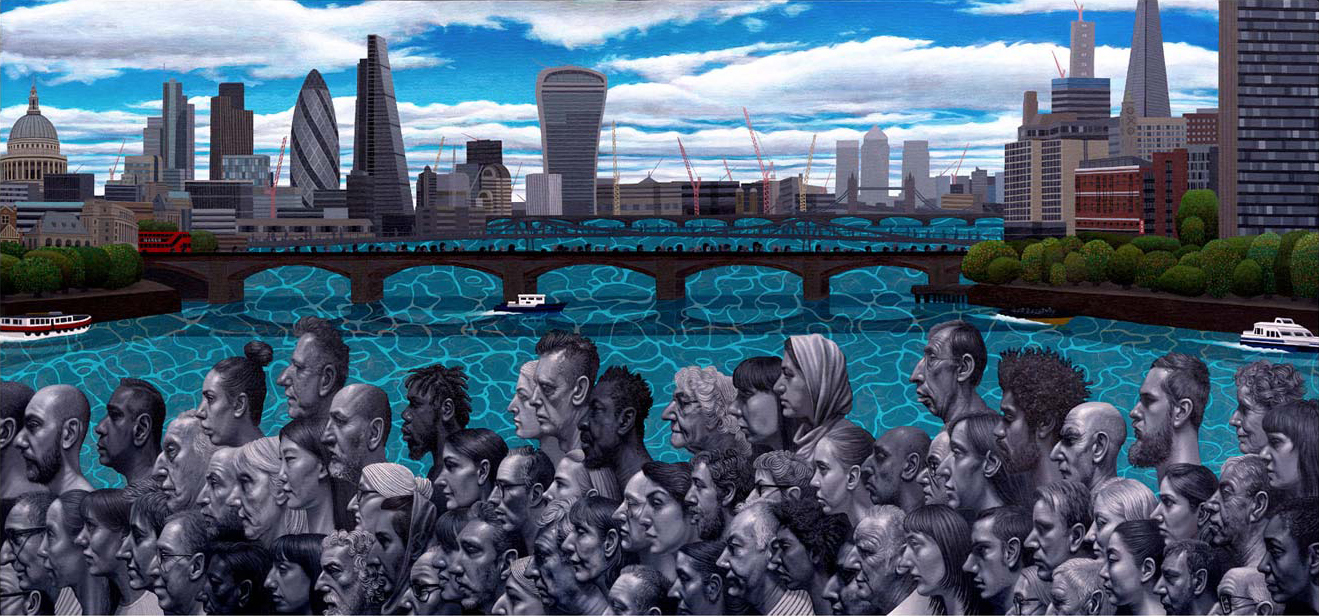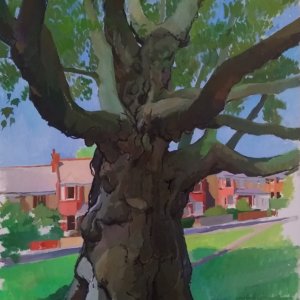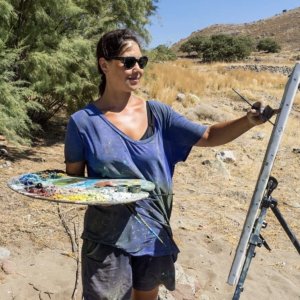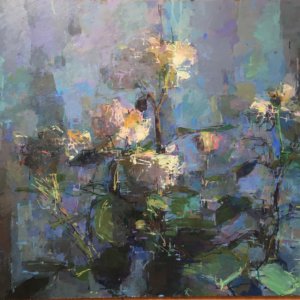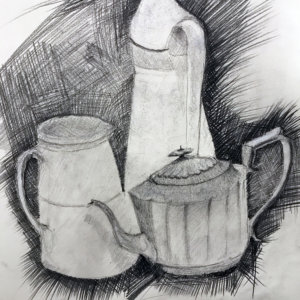Full Course Details
What is this course about?
A course of ten lessons by artist Carl Randall, exploring the process behind making imaginative figurative compositions, useful to students interested in both painting and drawing. Visualising images that are in your imagination is difficult to do, and this course looks at various for bringing an imagined idea into reality. Much of the course focuses on acquiring the skills and information necessary to construct imagined compositions, encouraging experimentation and a wide variety of approaches. You will examine composition and design in other artists work, using a variety of methods through which to get a feeling for its construction (maquette/model making, sketching, collage, tracing etc.). This will help you to understand the process behind making images, and the journey artists undertake in order to develop ideas. You will look at ways of using real-world reference material to give your imaginative works authenticity. Beginning with small thumbnail sketches to generate initial ideas, and by using the most appropriate routes, you will develop your own original compositions – arriving at finished images that most closely represent your aims and ideas.
What topics does the course cover?
● Composition & Design
● Narrative image making
● Painting & Drawing
● Sketching/Visualising
● Collage
● Generation & development of ideas
● Studying other artists’ work
● Maquette & model making
● Figure drawing
● Creative visualization
By the end of this course you will:
Have a further understanding of some figurative artists work, figurative painting and drawing, design and composition, the generation of ideas and processes behind making compositions that explore a certain theme or idea. Designed to help students visualise and develop their own ideas, you will gain confidence in picture-making as a result of this course.
What level is the course and do I need any particular skills?
This course is not suitable for very beginners, instead being designed for those with some experience in painting and drawing (from upper beginners/lower intermediate onwards). It will focus on understanding the tools of image making, the design process, creative visualisation, how to bring ideas into reality, and how to create figure compositions that responds to a personal theme, idea or concept.
What will I be required to do during the online tutorials, and will I be required to do homework?
For the first approx 60 minutes, detailed presentations are given by Carl Randall to illustrate methods and ideas, with which students will then use to make their own work during the following 2 hours, in response to what was learnt during the presentations. Aside from materials required for the practical lessons, it is advisable for students to have a pen and note pad to hand, to take notes during the presentations. Materials required for the practical exercises are listed below. The 2 hour practical lesson following the presentation is designed so that students can make a good start with the project, with the tutor there to guide and give advice. To get the most out of the learning experience, students are strongly encouraged to continue with and finish the exercises in their own time, outside the Zoom sessions. Projects finished off during the students own time will be looked at and discussed the following week.
Use of ‘Padlet’.
Students will be required to upload their work onto the Heatherleys ‘Padlet’ account (a free online sharing and teaching and sharing platform). This will allow the tutor and other students to see work you produce, and for group discussions to occur. Details of this will be sent to you nearer the time of the start of the course. The tutor will show you how to use it, if you are not familiar with it. Note that access to a digital camera will be required for this (mobile phone is fine), in order to take photos of your work and upload it onto Padlet. This process may be required during lessons also.
Notes about online meetings.
For privacy and copyright reasons, all forms of recording of the presentations and lessons are strictly prohibited (audio, video, screen-grabs etc) – without the express permission of the tutor (for example when the tutor may occasionally instruct you to do so, as part of the learning exercise).
Please also note that presentations start exactly at start of the scheduled meeting. Therefore, please ensure you are on time. Usually meetings are open 30 mins in advance of their starting, which you welcome to sign into early.
The school or tutor cannot be responsible for students not being able to sign in on time, or for any internet connection problems on the students side.
COURSE SCHEDULE:
Lesson 1
Picasso’s ‘Guernica’.
You will study the process behind the making of Picasso’s ‘Guernica’. Picasso made over 50 drawings as a way of working out the composition and individual components of the painting, and you will copy the drawings as a way of understanding the journey behind its making, from quick thumbnail sketches, to the large finished painting.
Materials required –
Drawing: Pencils, pen, charcoal, erasers, A3 sketchbooks, ink, brushes.
Painting: Painting paper, brushes, paints (various colours), brushes, painting medium (any).
Lesson 2
Figurines & maquettes.
As a way of understanding how an artist can construct and visualise multiple figure compositions, you will look at a technique used by some Old Masters and contemporary painters, that of maquettes. This is a valuable way to help you visualise a scene in 3D and create original and complex compositions.
Materials required –
Drawing: Pencils, pen, A3 sketchbooks, plastercine, erasers, sculpting knives/tools, card, tape, charcoal, scissors.
Painting: Small to medium size canvas (or painting paper), paints (black, white, red, blue, yellow), brushes, painting medium (any), plastercine, erasers, sculpting knives/tools, card, tape, charcoal, scissors.
Lesson 3
Collage and responding to a Narrative.
Starting by looking at drawings by other artists, and being given a passage of text from Brother Grimm’s fairytales, you will develop under drawings to work out compositions. Manual collage will also be used – cutting out and moving things to suit the composition. The underlying large shapes that make up the general composition will also be emphasized.
Materials required –
Drawing: Pencils, coloured paper (various of colours), pen, charcoal, erasers, A3 sketchbooks, ink, card, scissors, tracing paper, glue, brushes.
Painting: Please bring printed images from art history (that you find interesting), pencils, pen, charcoal, erasers, A3 sketchbooks, ink, card, scissors, tracing paper, glue, brushes, small to medium size canvas (or painting paper), paints (various colours), brushes, painting medium (any).
Lesson 4
Life Drawing/Figure Composition – Memory and imagination.
Specific exercises designed to use the memory and imagination, in relation to imagining form and structure, as a way to encourage a more personal approach to drawing, and bring out ones own personal style. Pencil, paper, eraser required for this lesson.
Materials required –
Drawing: Pencils, pen, paper, charcoal, erasers, paper (large eg. A2), ink, scissors, glue, brushes.
Painting): Painting paper, small to medium size canvas, paints (various colours), brushes, painting medium (any), paper (large eg. A2), tape, charcoal, scissors, glue.
Lesson 5
‘Stealing from Art History’.
As a starting point for an original composition, you will take ideas and visual elements you like in one or a number of famous artworks from art history, using collage and line drawing to develop an original composition.
Materials required –
Drawing: Printed images from art history (that you find interesting), pencils, pen, charcoal, erasers, A3 sketchbooks, ink, card, scissors, tracing paper, glue, brushes.
Painting: Printed images from art history (that you find interesting), pencils, pen, charcoal, erasers, A3 sketchbooks, ink, card, scissors, tracing paper, glue, brushes, small to medium size canvas (or painting paper), paints (various colours), brushes, painting medium (any).
Lesson 6
Tutor Masterclass.
An introduction to how tutor Carl Randall constructs his paintings, with an emphasis on the idea of pattern making; repetition of shape, form and colour; composition and design; and the abstract elements and thinking behind realistic images. You will also study the work of other relevant artists with regard to this.
Materials required –
Drawing: Please have ready printed images of a person and place that interests you (or persons/places). These two will then be combined into one image. Pencils, pen, charcoal, erasers, A3 sketchbooks, ink, brushes, glue, charcoal, tracing paper, scissors.
Painting: Please provide printed images of a person and place that interests you (or persons/places). These two will then be combined into one image. Brushes, small to medium size canvas (or painting paper), paints (various colours), brushes, painting medium (any).
Lesson 7
How the eye moves around pictures.
You will be shown examples of how artists throughout art history carefully constructed their images to guide the viewers’ eye around compositions, creating flow and to encourage the eye look at everything, or pointing towards something important within the picture or narrative.
Materials required –
Drawing: Pencils, pen, charcoal, erasers, A3 sketchbooks, ink, brushes.
Painting: Painting paper, brushes, paints (various colours), brushes, painting medium (any).
Lesson 8
Drawing from movies / Self Portrait.
Using pencil sketches from certain paused frames of movies as a starting point, you will collage and manipulate your sketches (either digitally or manually), adding your own elements taken from other sources. If students already have digital manipulation software (eg. Photoshop) and know how to use it, a digital image will be made. If not, a paper collage/image will be manually made.
Materials required for homework (drawing & drawing): Digital software (optional) eg. Photoshop, Gimp etc; pencils, pen, charcoal, erasers, A4 or A3 sketchbook, ink, brushes.
Lesson 9
Personal project – Week 1. Generation & development of ideas (thumbnail sketches).
You will be asked to make a list of motifs and senses associated with the personal theme you would like to pursue. Using this as a starting point, you will generate a large range of small throw-away thumbnail sketches, trying out different possibilities to visualize ideas. Emphasis will be placed on free thinking, lack of self-criticism, and the generation of as many ideas as possible. This should be helpful for the construction of images in the following weeks. You will be required to bring in a wide selection of reference material in order to develop your thumbnail ideas.
Materials required –
Images/research relevant to your chosen project.
Drawing: Pencils, pen, charcoal, erasers, paper (any size you wish to work on), ink, brushes (or/and any materials you think you would like to make your final image from).
Painting: Canvas or painting paper (you choose size), brushes, paints (various colours), brushes, painting medium (any), and/or any materials you think you would like to make your final image from.
Lesson 10
Personal project – Week 2. Execution of final image.
Materials required –
Your artwork started last week.
Drawing: Pencils, pen, charcoal, erasers, paper (any size you wish to work on), ink, brushes (or/and any materials you think you would like to make your final image from).
Painting: Canvas or painting paper (you choose size), brushes, paints (various colours), brushes, painting medium (any), and/or any materials you think you would like to make your final image from.
